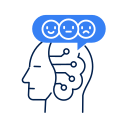Rhythms, Boundaries, and Deep Work
Batch your questions into defined windows. For example, 10:30–11:00 and 15:30–16:00 only. Between sessions, collect prompts in a note. This simple boundary restores flow and keeps creative thought pleasantly uninterrupted.
Rhythms, Boundaries, and Deep Work
One day a week, work without AI. Rehearse fundamentals: outlining by hand, editing with a printed page, debugging with deliberate traces. Your underlying skills sharpen, and AI becomes an accelerator instead of a crutch.







